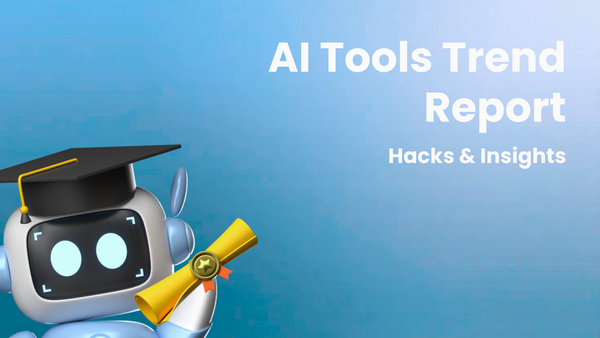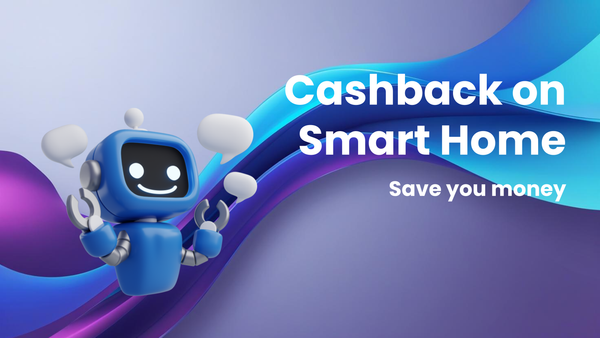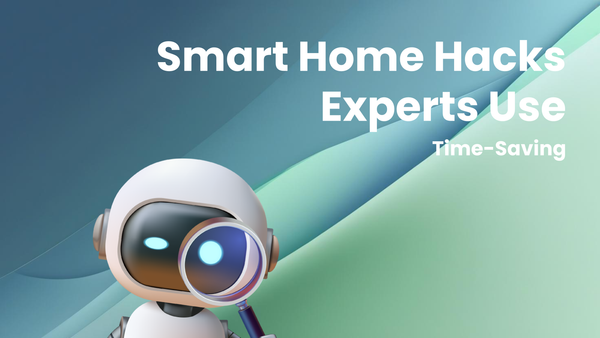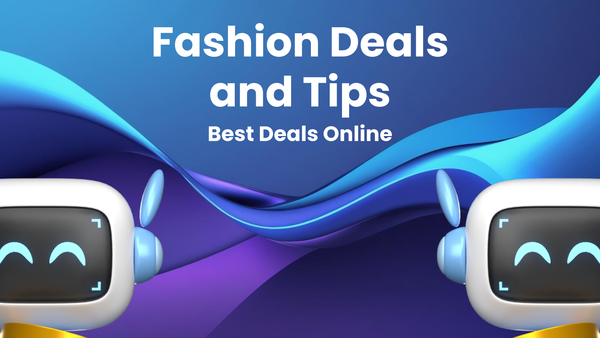Understanding Buyer Behavior for Productivity Tool Promo Code Optimization

Understanding Buyer Behavior for Productivity Tool Promo Code Optimization
Imagine this: you’ve spent weeks crafting the perfect productivity tool. It streamlines workflows, boosts focus, and genuinely makes people more efficient. Now, you’re launching a promo code campaign, but it falls flat. Why? Because you haven’t understood the behavior of the people you’re trying to reach.
In today's competitive software market, simply offering a discount isn't enough. To truly optimize your promo codes and drive conversions, you need a deep understanding of the psychological and practical factors that influence buying decisions. This article will delve into the core principles of buyer behavior, demonstrating how you can leverage these insights to create compelling, effective promo code campaigns for your productivity tool. We will explore how understanding your target audience’s motivations, pain points, and decision-making processes can transform a generic discount into a powerful conversion driver.
What is Buyer Behavior and Why Does It Matter for Promo Code Optimization?
Buyer behavior encompasses the psychological, social, and emotional processes individuals undergo when searching for, evaluating, purchasing, using, and disposing of goods or services. It's the study of why people buy – or don't buy – a specific product.
For promo code optimization, understanding buyer behavior is crucial for several reasons:
- Relevance: Promo codes that resonate with a buyer's specific needs and motivations are far more effective. A general discount might attract some, but a targeted offer addressing a specific pain point will convert more prospects.
- Perceived Value: The perceived value of a discount is influenced by how it's presented and the buyer's existing perception of the product. Understanding these perceptions allows you to frame your promo codes for maximum impact.
- Timing: Buyer behavior reveals optimal times to offer discounts. Understanding when your target audience is most receptive to offers can drastically improve conversion rates.
- Segmentation: Different buyer segments have different needs and motivations. Understanding these differences allows you to tailor promo codes for specific groups, increasing their effectiveness.
Think of Grammarly. They don’t just send out generic "20% off" promo codes. They often target users who have Grammarly installed but haven't upgraded to Premium, reminding them of the advanced features they're missing and highlighting the benefits in relation to specific writing challenges. This understanding of their users' needs and hesitations is a prime example of applying buyer behavior principles.
Deconstructing the Buyer Decision-Making Process
To effectively optimize promo codes, you need to understand the stages a potential buyer goes through before making a purchase. Typically, this process involves five key stages:
- Need Recognition: The buyer recognizes a problem or need. For a productivity tool, this might be the realization they are constantly missing deadlines, struggling with organization, or feeling overwhelmed.
- Information Search: The buyer actively seeks information about potential solutions. This can involve online research, reading reviews, asking for recommendations, or trying free trials of different tools.
- Evaluation of Alternatives: The buyer compares different options based on their features, price, reviews, and perceived value. They're weighing the pros and cons of each tool to determine which best meets their needs.
- Purchase Decision: The buyer chooses a specific tool and makes the purchase. This decision is influenced by factors like price, availability, ease of use, and perceived risk.
- Post-Purchase Behavior: The buyer evaluates their satisfaction with the purchase. If they're happy, they may become a loyal customer and recommend the tool to others. If they're unhappy, they may seek a refund or leave negative reviews.
How Promo Codes Impact Each Stage:
- Need Recognition: Promo codes can trigger need recognition by highlighting the potential cost savings of addressing a problem. For instance, a limited-time discount on a time-tracking tool can incentivize someone to acknowledge their time management issues.
- Information Search: Promo codes can influence the information search stage by making your tool more attractive compared to competitors. A strategically placed promo code on your website or in online reviews can sway potential buyers in your favor.
- Evaluation of Alternatives: Promo codes are most effective at this stage. They can be the deciding factor between choosing your tool versus a competitor's. A well-timed discount can make your tool the most appealing option, especially if it offers comparable features.
- Purchase Decision: Promo codes can reduce perceived risk and encourage immediate action. A "money-back guarantee" combined with a promo code can provide the confidence needed to complete the purchase.
- Post-Purchase Behavior: While promo codes don't directly influence post-purchase behavior, a positive experience encouraged by the promo can lead to customer loyalty. Consider offering exclusive discounts to existing customers to retain their business and encourage referrals.
Psychological Factors Influencing Promo Code Effectiveness
Several psychological principles underpin buyer behavior and influence how promo codes are perceived. Understanding these principles can help you craft more compelling and effective offers.
- Scarcity: People place a higher value on things that are perceived as scarce or limited. Promo codes with limited-time offers or limited availability create a sense of urgency and can drive immediate action. Example: "Only 50 codes available! Get 30% off today."
- Loss Aversion: People are more motivated to avoid losses than to acquire equivalent gains. Framing a promo code as a way to avoid missing out on savings can be more effective than simply highlighting the discount. Example: "Don't miss out on this exclusive offer! Save 25% on our Pro Plan before it's gone."
- Anchoring: People tend to rely heavily on the first piece of information they receive when making decisions. By initially presenting a higher price and then offering a significant discount, you can make the promo code seem more appealing. Example: "Regular price: $99/month. Today only: $69/month with code SAVE30."
- Social Proof: People are more likely to take action if they see others doing the same. Including testimonials or reviews alongside your promo codes can increase their credibility and effectiveness. Example: "Join thousands of satisfied users! See why they're raving about our productivity tool. Use code BOOST for 15% off."
- Reciprocity: People feel obligated to reciprocate when they receive something of value. Offering a small free gift or bonus alongside your promo code can increase the likelihood of a purchase. Example: "Get 20% off your first month + a free productivity ebook with code GETSTARTED."
Case Study: AppSumo and the Power of Scarcity
AppSumo, a platform that offers lifetime deals on software, leverages the principle of scarcity masterfully. Their deals are typically available for a limited time only, creating a sense of urgency that drives sales. They clearly display the time remaining for each deal, often including a counter ticking down the seconds. This scarcity tactic, combined with attractive discounts, makes their offers highly compelling and drives a significant volume of sales.
Segmenting Your Audience for Personalized Promo Code Optimization
Not all buyers are created equal. Segmenting your audience based on their needs, behaviors, and demographics allows you to tailor promo codes for maximum impact. Here are some common segmentation strategies:
- New vs. Existing Customers: New customers might be attracted by a higher discount to incentivize their initial purchase, while existing customers might respond better to loyalty rewards or exclusive offers.
- Free Trial Users: Users who have tried your free trial are already interested in your tool. Offering them a special promo code at the end of their trial can convert them into paying customers.
- Feature Usage: Segment users based on the features they use most frequently. Offer promo codes that unlock additional features related to their interests. For example, if someone frequently uses the project management features, offer a discount on advanced collaboration tools.
- Industry/Job Title: Tailor promo codes to specific industries or job titles. A marketer might respond better to a discount on social media integration features, while a developer might be interested in a discount on API access.
- Engagement Level: Identify users who are highly engaged with your tool but haven't upgraded to a paid plan. Offer them a targeted discount to incentivize them to convert.
Example: Slack's Personalized Approach
Slack effectively segments its audience based on usage and team size. They offer different pricing plans and promo codes tailored to businesses of various sizes and needs. They also offer special discounts for non-profit organizations and educational institutions, demonstrating their understanding of different customer segments.
Actionable Guide: Optimizing Your Promo Codes Based on Buyer Behavior
Here's a step-by-step guide to optimizing your promo codes based on buyer behavior:
- Define Your Target Audience: Clearly identify your ideal customer. What are their needs, pain points, and motivations? What are their demographics and psychographics?
- Map the Buyer Journey: Understand the steps your target audience takes when considering a productivity tool like yours. Identify the key touchpoints where promo codes can influence their decision.
- Segment Your Audience: Divide your audience into different segments based on their behavior, demographics, and needs.
- Craft Personalized Promo Codes: Create promo codes that are tailored to each segment. Consider the psychological principles of scarcity, loss aversion, anchoring, social proof, and reciprocity.
- Choose the Right Channels: Distribute your promo codes through the channels that your target audience uses most frequently. This might include email, social media, your website, or online advertising.
- Track and Analyze Results: Monitor the performance of your promo codes closely. Track metrics like conversion rates, click-through rates, and revenue generated. Use this data to refine your strategy and optimize your future campaigns.
Checklist for Effective Promo Codes:
- Clear and Concise: Make your promo code easy to understand and remember.
- Specific: State the exact discount or offer clearly.
- Relevant: Ensure the promo code is relevant to the target audience.
- Urgent: Create a sense of urgency with a limited-time offer.
- Easy to Redeem: Make it easy for customers to redeem the promo code.
- Trackable: Use unique codes for each campaign to track performance.
Common Pitfalls to Avoid:
- Generic Promo Codes: Avoid offering generic discounts that don't resonate with your target audience.
- Hidden Fees: Be transparent about any additional fees or charges.
- Complicated Redemption Process: Make it easy for customers to redeem the promo code.
- Ignoring Data: Don't ignore the data from your campaigns. Use it to optimize your strategy and improve your results.
- Overusing Promo Codes: Avoid overusing promo codes, as this can devalue your product and brand.
The Future of Promo Code Optimization: Predictive Analytics and AI
The future of promo code optimization lies in leveraging predictive analytics and artificial intelligence (AI) to personalize offers in real-time. AI algorithms can analyze vast amounts of data to predict individual buyer behavior and deliver tailored promo codes that are most likely to convert.
Imagine an AI-powered system that analyzes a user's browsing history, past purchases, and engagement with your tool to determine the optimal discount amount and the perfect time to deliver it. This level of personalization will revolutionize promo code optimization and drive unprecedented levels of conversion.
While this level of sophistication might seem distant, the underlying principles of understanding buyer behavior will remain crucial. The more you understand your target audience's needs and motivations, the better equipped you will be to leverage the power of AI and create truly personalized and effective promo code campaigns.
Conclusion
Optimizing promo codes is not just about offering discounts; it's about understanding the psychology and behavior of your target audience. By understanding how buyers make decisions, segmenting your audience, and applying psychological principles, you can craft compelling offers that drive conversions and build lasting customer relationships.
The key takeaway is this: don't treat promo codes as a one-size-fits-all solution. Invest the time and effort to understand your buyers, tailor your offers to their specific needs, and track your results closely. By doing so, you can transform a simple discount into a powerful tool for driving growth and achieving your business goals.
Next Steps:
- Conduct a thorough analysis of your current customer base to identify different buyer segments.
- Map the buyer journey for each segment to understand the key touchpoints where promo codes can have the most impact.
- Experiment with different promo code strategies, such as scarcity, loss aversion, and social proof.
- Track the performance of your campaigns closely and use the data to refine your strategy.
By taking these steps, you can unlock the full potential of promo codes and drive significant growth for your productivity tool. Start now, and watch your conversion rates soar.




